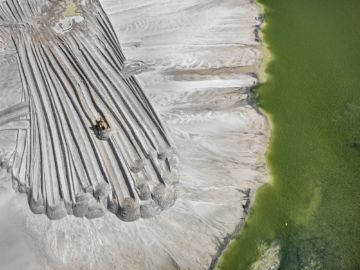Anthropocene
Burtynsky’s 'Anthropocene' explores the collective impact we as a species are having on the surface of the planet; an inspection of the human systems we've imposed onto natural landscapes. He has turned his lens on the terrible beauty of industrial interventions in nature such as mining, quarrying, manufacturing, shipping, the production of oil, and recycling. The title 'Anthropocene' refers to a proposal circulating in the scientific community to formally recognize the commencement of a new geological epoch – the Anthropocene – in which humans are the primary cause of permanent planetary change.
'We have reached an unprecedented moment in planetary history,’ stated Burtynsky. ‘Humans now arguably change the Earth and its processes more than all other natural forces combined.’
For 'Anthropocene', Burtynsky travelled to every continent, with the exception of Antarctica, and visited twenty countries including Canada, Chile, China, Germany, India, Indonesia, Italy, Kenya, Nigeria, Russia, Spain and the United States. Often shooting from his signature bird’s-eye view using airplanes, helicopters and drones, his large-scale photographs are rich in detail and vast in scale, sometimes verging on the appearance of painterly abstractions. His images strike an intricate balance between a sombre reportage and a powerfully seductive aesthetic. 'Anthropocene' reflects the dilemma between society's desire for prosperity and its impact on the environment.
